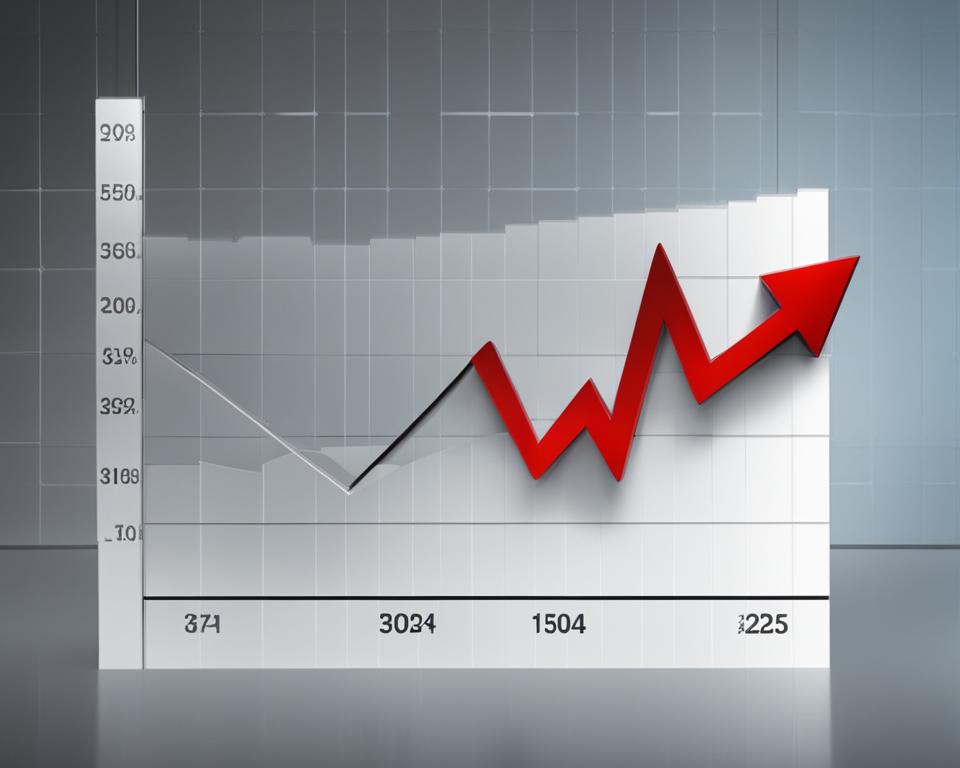Platinum, often considered a premium metal, is currently experiencing lower market prices compared to gold and silver. As of December 2023, platinum is valued at approximately $917.90 per ounce, significantly less than gold at $2,030.10 per ounce and silver at $24.27 per ounce.
This lower valuation can be attributed to various market dynamics including decreased demand from the automotive sector and increased mining output. The advent of electric vehicles (EVs) has also played a role in reshaping the demand landscape for platinum. Despite its rarity and industrial utility, platinum remains relatively affordable in the current market.
Platinum Market Demand
Platinum demand is driven by three main sectors: automotive, jewelry, and industrial. The automotive sector plays a crucial role, accounting for 40% of the total platinum demand. This sector has witnessed changes due to evolving emission control technologies, shaping the demand landscape for platinum.
Emerging markets, such as China and India, have seen a significant increase in platinum demand over the past decade. This surge is fueled by the expansion of industrial applications and a growing jewelry market in these regions.
The industrial sector also contributes to platinum demand, particularly in areas like chemical manufacturing and medical devices. The industrial sector accounts for a substantial portion of the platinum market, driving innovation and technological advancements.
Platinum Demand Drivers
The demand for platinum is driven by various factors, including:
- The rise of electric vehicles (EVs): The shift towards EVs requires more platinum to meet the demand for catalytic converters in these vehicles.
- Renewable energy technologies: The growth of renewable energy, such as hydrogen fuel cells and photovoltaic cells, increases the demand for platinum in these green technologies.
- Industrial applications: Platinum’s unique properties make it essential for various industrial processes, including chemical manufacturing catalysts and medical devices.
These demand drivers shape the platinum market, creating opportunities for investors and industries alike.
| Sector | Percentage of Platinum Demand |
|---|---|
| Automotive | 40% |
| Jewelry | 30% |
| Industrial | 30% |
Platinum’s role in these sectors highlights its versatility and importance in various industries. As the demand for platinum continues to evolve, understanding the market dynamics and demand drivers becomes crucial for investors and industry stakeholders.
Industrial Uses of Platinum
Platinum is highly valued in various industrial applications, making it a crucial element in multiple sectors. Its unique properties and versatility contribute to its widespread use, fulfilling critical functions across different industries.
In the Automotive Industry
The automotive sector is one of the major consumers of platinum, utilizing approximately 100 tons annually. One of its primary applications in this industry is catalytic converters, which help reduce harmful emissions from vehicles. Platinum-based catalytic converters effectively convert toxic gases into less harmful substances, contributing to cleaner air and reduced environmental impact.
In Chemical Manufacturing
Platinum serves as a catalyst in chemical manufacturing processes, where it facilitates chemical reactions without being permanently consumed. Chemical manufacturing catalysts play a vital role in various industries, including pharmaceuticals, petrochemicals, and plastics. The use of platinum catalysts enables more efficient production and improves product quality.
In Medical Devices
Platinum finds extensive application in the production of medical devices, such as pacemakers and dental fillings. Its biocompatibility, corrosion resistance, and durability make it an excellent choice for these critical healthcare devices. Platinum-based medical devices ensure reliable functioning and long-term compatibility within the human body.
Technological Advancements
Platinum’s industrial usage goes beyond traditional sectors. It plays a significant role in groundbreaking technologies such as hydrogen fuel cells and data storage.
“The development of hydrogen fuel cells, which rely on platinum as a catalyst, has the potential to revolutionize clean energy production and transportation.”
Hydrogen fuel cells utilize platinum catalysts to facilitate the conversion of hydrogen and oxygen into electricity, emitting only water as a byproduct. This technology holds promise for a more sustainable future, reducing reliance on fossil fuels and contributing to cleaner energy solutions.
“Platinum also plays a crucial role in data storage technologies, improving the efficiency and reliability of data centers.”
Platinum-coated materials are used in hard disk drives and solid-state drives to enhance data storage capacity and ensure reliable performance. The unique properties of platinum contribute to the stability and longevity of data storage systems in various industries.
The industrial demand for platinum is significant, accounting for 30% of its total demand. As new technologies and industries emerge, platinum continues to play an integral role in advancing various sectors.
Technological Advancements & Platinum Demand
Technological advancements play a crucial role in shaping the demand for platinum, a valuable and versatile metal. As new technologies emerge, they drive the need for platinum in various applications, contributing to its market demand. Two significant areas where platinum demand is influenced by technological advancements are hydrogen fuel cells and data storage technologies.
Hydrogen fuel cells are a promising clean energy solution, and platinum plays a vital role in their functionality. These fuel cells generate electricity by converting hydrogen and oxygen into water, with platinum acting as a catalyst. The use of platinum in hydrogen fuel cells not only enhances their efficiency but also reduces their emissions. The development and adoption of hydrogen fuel cell technology are expected to increase platinum demand by 10% over the next decade.
Data storage technologies, such as hard drives and solid-state drives, also rely on platinum for their performance and reliability. Platinum-based materials are utilized in various components of data storage devices, including the magnetic layers in hard disk drives and the conductive layers in solid-state drives. The increasing volumes of data generated and the growing demand for efficient storage solutions contribute to the need for platinum in this sector.
As technological advancements continue to evolve and shape our society, the demand for platinum from hydrogen fuel cells and data storage technologies is projected to rise. These advancements present both opportunities and challenges for platinum, as it cements its position as a critical element in emerging technologies.
The Impact of Platinum in Technological Advancements
Platinum’s involvement in technological advancements goes beyond its demand in fuel cells and data storage technologies. Its unique properties, such as high electrical conductivity and resistance to corrosion, make it indispensable in various cutting-edge applications.
“Platinum’s exceptional properties make it a critical component in advancing technologies, from the automotive industry to renewable energy. Its versatility and durability are unmatched, ensuring high-performance and sustainable solutions.” – Dr. Elizabeth Johnson, Materials Science Researcher
By harnessing the power of platinum, researchers and engineers continue to push the boundaries of what is possible, driving innovation and transforming industries.
Platinum in the Green Technology Sector
Platinum plays a crucial role in driving the advancements of green technologies such as photovoltaic cells and hydrogen fuel cells. These technologies rely on platinum’s unique properties to enable sustainable energy solutions.
Photovoltaic cells, used in solar panels, utilize approximately 5 grams of platinum per cell. Platinum acts as a catalyst, facilitating the conversion of sunlight into electricity. The growing demand for renewable energy sources, coupled with government incentives and subsidies, is driving the adoption of photovoltaic cells on a global scale.
Hydrogen fuel cells, another key application of platinum, require around 30 grams of the metal per cell. Platinum acts as a catalyst in fuel cell reactions, allowing the conversion of hydrogen and oxygen into electricity with minimal emissions. This technology holds immense potential for reducing carbon emissions, particularly in the transportation sector.

Platinum’s demand in green technologies is projected to rise by 5-15% in the next five years, driven by the global transition to sustainable energy solutions.
The demand for platinum in the green technology sector is further propelled by global environmental policies, such as the Paris Agreement. This landmark agreement has strengthened commitments to combat climate change and encouraged investments in sustainable technologies.
The growth of the renewable energy sector, including solar power and hydrogen-based technologies, highlights the ongoing importance of platinum in enabling a greener future. As the world continues to prioritize sustainable development, platinum will play a critical role in powering the transition to cleaner and more efficient energy sources.
| Key Takeaways | Platinum Demand |
|---|---|
| Photovoltaic Cells | 5 grams of platinum per cell |
| Hydrogen Fuel Cells | 30 grams of platinum per cell |
| Demand Projection | Rise by 5-15% in the next five years |
Platinum Mining and Global Supply Chains
The global supply of platinum is heavily concentrated, with South Africa leading production and contributing over 70% to the global supply. Other significant producers include Russia (12%) and Zimbabwe (8%).
“South Africa is a key player in platinum mining, accounting for a substantial portion of the global supply. With its vast reserves and well-established mining infrastructure, the country holds a dominant position in the industry.”
The Bushveld Complex in South Africa alone produces about 200 tons of platinum annually. This mining region is known for its rich platinum deposits and plays a pivotal role in global platinum production.
Platinum mining involves complex processes, including exploration, extraction, and refining. The average production cost is around $900 per ounce, reflecting the intricate nature of platinum extraction and processing.
However, the platinum mining industry is not without challenges. Geopolitical factors and labor disputes can disrupt global platinum output and supply chains. Any disruptions to mining operations in South Africa, Russia, or Zimbabwe can significantly impact the availability of platinum in the market.
To illustrate the global distribution of platinum production, refer to the following table:
| Country | Percentage of Global Supply |
|---|---|
| South Africa | 70% |
| Russia | 12% |
| Zimbabwe | 8% |
| Other Countries | 10% |
Understanding the dynamics of platinum mining and global supply chains is crucial for investors and industry stakeholders to assess the availability and pricing of this precious metal.
Platinum’s Price History
The price of platinum has experienced significant fluctuations over time, influenced by various economic events and industry-specific factors. Understanding the price history of platinum provides valuable insights for investors and analysts alike.
One notable price movement in platinum occurred in 2008 when the price reached a peak of over $2,250 per ounce. However, the following year, in 2009, the price dropped to as low as $800 per ounce. These substantial price fluctuations demonstrate the volatility inherent in the platinum market.
Economic events play a crucial role in shaping platinum prices. For instance, the 2008 financial crisis had a significant impact on the platinum market, causing prices to plummet. Additionally, the introduction of new automotive emission standards in 2014 influenced the demand for platinum in the automotive sector, consequently affecting its price.
Global economic conditions and geopolitical events also contribute to platinum price movements. Shifts in economic growth, inflation rates, trade policies, and political stability can directly affect the supply and demand dynamics of platinum, ultimately influencing its price.
Economic Events and Platinum Price Fluctuations
“The 2008 financial crisis sent shockwaves through the platinum market, causing a sharp decline in prices. It served as a reminder of the interplay between economic events and precious metal prices.”
The platinum market is intricately linked with economic events and trends. Investors and market participants closely monitor global economic indicators and developments to anticipate potential price fluctuations in the platinum market.
Impact of Automotive Emission Standards
The automotive industry is a significant consumer of platinum, utilizing the metal in catalytic converters to reduce harmful emissions. As new automotive emission standards are introduced to address environmental concerns, the demand for platinum in this sector can experience significant shifts, reflecting in its price movements.
The implementation of stricter emission standards for vehicles worldwide can lead to increased demand for platinum as automakers seek to comply with these regulations. Consequently, this increased demand can impact platinum prices, creating opportunities and challenges for investors in the metal.
Economic and Geopolitical Factors
Economic and geopolitical factors play a critical role in influencing platinum demand and prices. As an investor or market participant, understanding these factors is essential for assessing market conditions and identifying potential investment opportunities.
“Economic trends significantly impact platinum demand and prices.”
One of the key economic factors that affect platinum prices is the demand from the automotive industry. During an economic downturn, when consumer spending decreases, the demand for automobiles declines as well. This reduced demand directly impacts platinum prices, as the automotive industry is one of the major consumers of this precious metal.
Geopolitical events also have a significant influence on platinum prices. Trade tensions between countries, such as import/export restrictions or tariffs, can disrupt supply chains and impact the overall demand for platinum. Any geopolitical uncertainty that affects global trade can cause price fluctuations in the platinum market.
“Economic policies, especially changes in interest rates, can directly impact the platinum market.”
Changes in interest rates are another economic factor that affects platinum prices. When interest rates increase, borrowing costs rise, leading to reduced spending and economic slowdown. This can negatively impact platinum demand, especially in sectors like automotive and industrial manufacturing, where platinum is extensively used.
| Economic Factors | Geopolitical Factors |
|---|---|
| – Demand from automotive industry – Changes in interest rates |
– Trade tensions between countries – Global supply chain disruptions |
Investors and market participants closely monitor economic indicators, such as GDP growth, inflation rates, and unemployment levels, as well as geopolitical developments to gain insights into platinum market conditions. These factors provide valuable information for making informed investment decisions and managing risks in the platinum market.

Platinum vs. Other Precious Metals
Platinum stands apart from other precious metals in terms of its unique market dynamics and volatility. When comparing platinum to gold, for example, platinum exhibits higher price volatility with a 10-year standard deviation of 30% compared to gold’s 20%. This heightened volatility reflects the inherent market dynamics and fluctuations in platinum prices.
Furthermore, historical price correlations between platinum and other metals have showcased periods of divergence, particularly during significant events such as the 2008 financial crisis. These correlations indicate that platinum can behave differently from other precious metals under certain market conditions.
“Platinum has its own rhythm in the market, often moving independently from gold and silver during times of economic uncertainty.” – Market Analyst
The distinct market dynamics and price movements of platinum make it an intriguing option for investors looking to diversify their portfolio beyond traditional precious metals. By understanding and considering the characteristics of platinum, investors can assess its potential as a valuable investment asset.
Platinum vs. Gold: Comparison of Price Volatility
When comparing platinum and gold, it becomes evident that platinum tends to exhibit greater price volatility. Here is a comparison of their 10-year standard deviations:
| 10-Year Standard Deviation | Platinum | Gold |
|---|---|---|
| Volatility | 30% | 20% |
As shown in the table above, platinum’s volatility of 30% exceeds that of gold’s 20%, indicating that platinum prices are more likely to experience significant fluctuations.
Historical Price Correlations
Platinum’s price correlations with other precious metals can provide valuable insights into its unique behavior. Here are some historical price correlations:
| Correlation | Platinum vs. Gold | Platinum vs. Silver |
|---|---|---|
| 2008 Financial Crisis | Divergence | Divergence |
| 2020 Market Volatility | Convergence | Convergence |
The table above illustrates how platinum’s price correlations can fluctuate over time, highlighting its unique position in the market. These correlations serve as a reminder that platinum can offer different investment opportunities and potential diversification benefits compared to gold and silver.
Platinum’s distinct qualities and market dynamics make it an intriguing option for investors seeking diversification beyond traditional precious metals. Whether compared to gold or silver, platinum’s price volatility and historical correlations set it apart as a distinct investment opportunity.
Future Outlook for Platinum Prices
When it comes to the future outlook for platinum prices, market predictions are mixed. Analysts foresee a potential 15% increase in platinum prices over the next three years driven by rising industrial demand. However, the growth of electric vehicles (EVs) introduces an element of uncertainty. While EVs may reduce platinum demand in automotive applications, there is an offsetting increase in demand for the metal in sectors like electronics.
Platinum’s role in renewable energy also influences the market outlook. As the world moves towards cleaner and more sustainable energy sources, platinum is projected to see an increase in demand in the green technology sector. Analysts predict a steady annual increase of 5% in platinum prices, driven by these factors.
Moreover, the continued growth of platinum exchange-traded funds (ETFs) also suggests a positive outlook for the metal. ETFs provide investors with an opportunity to gain exposure to platinum without physically owning the metal, thereby driving demand.
Impact of Industrial Demand and EVs
Industrial demand remains a key driver for platinum prices. The metal’s unique properties make it essential in various industrial applications, including catalytic converters, chemical manufacturing catalysts, and medical devices.
On the other hand, the rise of EVs presents a potential challenge for platinum demand in the automotive sector. While platinum is used in traditional combustion engine vehicles, EVs typically do not require the same amount of platinum for their catalytic converters. This shift in the automotive landscape could impact platinum demand in the long term.
Renewable Energy and the Green Technology Sector
Platinum’s role in renewable energy technologies, such as hydrogen fuel cells and photovoltaic cells, is expected to drive demand in the green technology sector. As countries worldwide commit to reducing greenhouse gas emissions and transitioning to clean energy sources, the demand for platinum in these sectors is projected to increase.
Hydrogen fuel cells, for instance, are seen as a promising alternative energy solution and rely on platinum for their functionality. Analysts anticipate a significant rise in platinum demand as these technologies become more prevalent.
Photovoltaic cells, used in solar panels, also require platinum as a key component. As the demand for renewable energy continues to grow, so does the need for platinum in the production of these cells.
The Future of Platinum Prices
While market predictions suggest a positive outlook for platinum prices, it is essential to consider the potential impact of industrial demand, EVs, and the green technology sector. As the balance between these factors evolves, so too may the trajectory of platinum prices.
As an investor, staying informed about market trends and developments in industrial applications and renewable energy can help navigate the changing landscape. It’s important to keep a close eye on market predictions and monitor key factors that drive platinum prices to make well-informed investment decisions.
Best Ways to Invest in Platinum
Investing in platinum offers a range of options to diversify your portfolio and take advantage of the metal’s potential for growth. Whether you’re a seasoned investor or just starting, here are some of the best ways to invest in platinum:
1. Platinum Coins
Consider purchasing physical platinum coins, such as the American Platinum Eagle or the Canadian Platinum Maple Leaf. These coins often have high purity levels and are highly valued by collectors and investors alike. Owning platinum coins provides a tangible asset that can be easily stored and traded.
2. Platinum ETFs
Platinum Exchange-Traded Funds (ETFs) offer a convenient and efficient way to invest in platinum without the need for physical ownership. ETFs track the price of platinum and can be bought and sold on major stock exchanges. They provide exposure to the platinum market and offer liquidity for investors.
3. Platinum Jewelry
In addition to its aesthetic appeal, platinum jewelry can serve as an investment option. The value of platinum jewelry appreciates over time, and it can be a unique addition to your investment portfolio. When investing in platinum jewelry, consider the craftsmanship, design, and overall quality to ensure its long-term value.
“Investing in platinum coins, platinum ETFs, or platinum jewelry allows you to tap into the potential growth of this precious metal.”
Remember, before making any investment decisions, it’s important to conduct thorough research, assess your risk tolerance, and consult with a financial advisor. Platinum prices can be volatile, so consider diversifying your investments and having a long-term perspective to navigate market fluctuations.
By exploring the various ways to invest in platinum, you can potentially benefit from the demand for this precious metal in industrial sectors and emerging technologies.
Table: Comparison of Platinum Investment Options
| Investment Option | Purity Levels | Management Fees | Liquidity |
|---|---|---|---|
| Platinum Coins | High purity levels | N/A | Limited liquidity |
| Platinum ETFs | No physical ownership | Low management fees | High liquidity |
| Platinum Jewelry | Varies depending on design | N/A | Limited liquidity |
Conclusion
Platinum, despite being perceived as a premium metal, currently offers unique investment opportunities due to its relatively lower market prices. The demand for platinum is driven by various sectors, including automotive, jewelry, and industrial, each with its own factors influencing demand.
Technological advancements and global supply dynamics further shape the platinum market. The future outlook for platinum prices remains mixed, with forecasts indicating a potential increase in prices driven by industrial demand and emerging technologies.
Investment options for platinum include coins, ETFs, and jewelry, with considerations for diversification and risk tolerance. As an investor, exploring the platinum market and understanding the factors influencing its prices and demand can present opportunities for potential returns.
FAQ
Why is platinum so cheap now?
Platinum is currently experiencing lower market prices compared to gold and silver due to decreased demand from the automotive sector and increased mining output. The rise of electric vehicles (EVs) has also played a role in reshaping the demand landscape for platinum. Despite its rarity and industrial utility, platinum remains relatively affordable in the current market.
What are the main sectors driving platinum demand?
The main sectors driving platinum demand are the automotive sector, jewelry sector, and industrial sector. The automotive sector accounts for 40% of the total demand for platinum, while the jewelry and industrial sectors also contribute significantly to the overall demand.
What are the industrial uses of platinum?
Platinum has diverse industrial applications, including its use in catalytic converters, chemical manufacturing catalysts, and medical devices such as pacemakers and dental fillings. These applications collectively account for 30% of the total platinum demand.
How do technological advancements impact platinum demand?
Technological advancements have a significant impact on platinum demand. The development of hydrogen fuel cells is expected to increase platinum demand by 10% over the next decade. Advancements in data storage technologies also contribute to the demand for platinum in various industries.
How does platinum play a role in green technologies?
Platinum plays a crucial role in green technologies such as photovoltaic cells and hydrogen fuel cells. Each photovoltaic cell utilizes about 5 grams of platinum, while hydrogen fuel cells require 30 grams per cell. The demand for platinum in these sectors is projected to rise by 5-15% in the next five years.
Where is platinum primarily mined and produced?
The global supply of platinum is heavily concentrated, with South Africa leading production and contributing over 70% to the global supply. Other significant producers include Russia and Zimbabwe.
What is the price history of platinum?
The price history of platinum has seen notable fluctuations. For instance, the price peaked at over ,250 per ounce in 2008 but then declined to 0 in 2009. Fluctuations in platinum prices are influenced by various economic events, such as the 2008 financial crisis and the introduction of new automotive emission standards in 2014.
What factors influence platinum prices?
Economic trends, geopolitical events, and economic policies such as changes in interest rates can significantly impact platinum demand and prices. Factors such as the decline in automotive industry demand during an economic downturn and trade tensions between countries contribute to price fluctuations.
How does platinum compare to other precious metals?
Platinum differs significantly from other precious metals in terms of market dynamics and volatility. Platinum’s price volatility is higher compared to gold, and its historical price correlations with other metals show periods of divergence, particularly during the 2008 financial crisis.
What is the future outlook for platinum prices?
Market predictions for platinum prices are mixed. Forecasts indicate a potential increase in price over the next few years due to rising industrial demand. However, the growth of electric vehicles might reduce platinum demand in automotive applications while increasing demand in sectors like electronics. Platinum’s role in renewable energy and the projected increase in platinum use in the green technology sector also influence market outlook.
What are the best ways to invest in platinum?
Investing in platinum can be done through various vehicles such as platinum coins and platinum ETFs. Each investment option has unique characteristics, including purity levels, management fees, and liquidity. Best practices for platinum investing include diversification and considering risk tolerance given the metal’s price volatility. Platinum jewelry is also an option for investment, combining the potential for appreciation with the aesthetic appeal of wearable art.
What are the investment opportunities in platinum?
Platinum, currently offering relatively lower market prices, presents unique investment opportunities. The demand for platinum is driven by various sectors, and technological advancements and global supply dynamics further shape the platinum market. The future outlook for platinum prices remains mixed, and investment options for platinum include coins, ETFs, and jewelry.





